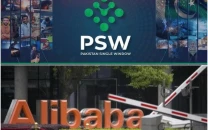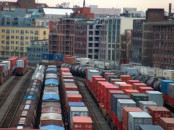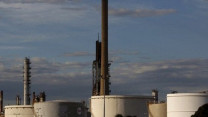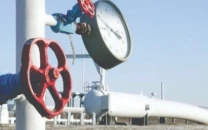Economic benefits: Change in thinking required to tap CPEC’s full potential
Project could become real game changer if attention is paid to 6 major areas

Project could become real game changer if attention is paid to 6 major areas. ILLUSTRATION: TALHA KHAN
China-Pakistan Economic Corridor (CPEC) could change all this through construction of new motorways, upgrading of rail network and developing a modern deep-sea port at Gwadar.
In addition, by building a number of new electricity generating facilities, laying of new optical fibres for telecommunications and establishing several new industrial parks, CPEC could herald Pakistan into a brighter future.
However, utilising the full potential of CPEC requires much better planning and a change in thinking than has been in evidence so far.
CPEC is not a standalone initiative as is commonly believed in Pakistan but is part of China’s bigger “One Belt, One Road” (OBOR) initiative, which encompasses 68 countries across Asia, Europe, the Middle East and Africa. Thus, CPEC could potentially change Pakistan’s global economic isolation and make the country an integral part of global trade and investment initiatives.
There are at least six major areas where immediate attention is needed if CPEC is to become a game changer in the years ahead as is often claimed by the proponents of this project.
Coal vs hydel power projects
First, the energy-related apportionment is rather heavily skewed towards setting up coal-based power plants.
According to the recent Fact Book on CPEC published by the Planning Division, almost $27 billion or over two-thirds of the total reserved for energy projects is being earmarked for coal-based projects as compared to a much smaller allocation of $5.619 billion for hydroelectric power generation.
Pakistan’s potential for hydroelectric power is estimated at 60,000 megawatts, which can meet all its current and foreseeable needs. Hydroelectric power is not only less costly but is also the most sustainable and clean source of energy.
In the past, it has been ignored for two reasons: initial construction cost of projects is high and their gestation period is long. Since enough funding is available and the time horizon of CPEC is sufficiently long, a forward-looking and better approach would have been to spend more on hydroelectric power projects rather than those based on imported coal.
Besides making Pakistan energy secure, the construction of hydroelectric power projects would also be of tremendous help in increasing the country’s chronically low water storage capacity and in controlling frequent floods.
Rail services neglected
Second, the allocation of $6 billion for roads versus $3.6 billion for railways is also lopsided. Currently, 96% of the total freight tonnage (domestic, international and transit trade) in Pakistan is handled by road transport.
This is unlike most other countries where most freight is carried by railways. This is partly because of the neglect and the lack of investment in rail services over the past several decades.
Greater spending on railways would not only be cost-effective but would make significant contribution towards a cleaner environment.
CPEC presents a brilliant opportunity to do so. Therefore, if one of the three routes (eastern, central or western) is devoted to building a new railway track instead of new highways, the dividends will be much better.
Chinese investors preferred
Third, CPEC provides great opportunities to form partnerships between Pakistani and Chinese companies and attract other global companies.
However, the government’s only focus seems to be to facilitate Chinese investors. Thus, as the project is progressing, it is tilting the field in favour of Chinese companies at the expense of local and other investors.
Through various Statutory Regulatory Orders (SROs), specific exemptions from import taxes have been allowed to certain Chinese companies, which amounts to special subsidies for them. Already under the free trade agreement, Pakistan allows a subsidy of Rs30 billion to Chinese exporters.
Instead of subsidies and tax concessions, the government should provide a level playing field so that CPEC could become a magnet for investments from worldwide sources and also benefit local investors.
Facilitating transit trade
Fourth, unlike other countries, Pakistan’s experience of allowing transit trade has not been economically beneficial to the country so far.
This is partly because Pakistan’s taxes on international trade are extremely high. This gives an incentive for smuggling and diversion of transit goods in the country.
Pakistan should reform its taxation regime so that it can become a facilitator of transit trade rather than a source of hindrance as has been noticed in the case of Afghanistan.
Embracing neighbours
Fifth, instead of antagonising its neighbours and fuelling regional rivalries, Pakistan should encourage them to become part of CPEC rather than become its detractors.
That would reduce its security expenses and would also make the project cost-effective and durable. Pakistan has to realise that CPEC is part of the bigger OBOR plan and not just limited to a transit corridor through Pakistan.
Workforce needs training
Finally, CPEC would only be a game changer if Pakistan’s bureaucracy and workforce are fully trained in order to make full use of this opportunity.
There is an urgent need to work on the “software” side such as training the workforce and simplifying regulations. Pakistan is ranked amongst the countries with the worst score on the World Bank’s Doing Business 2016 ranking (138 out of 189).
If we have the “hardware” such as roads and railway networks but do not have adequate “software”, the only beneficiaries will be the Chinese traders, who would have a shorter route connecting China’s western border provinces with the Middle East.
It would be a pity if the full potential of a great opportunity like CPEC is not utilised optimally due to faulty planning and lack of preparedness.
The writer served as Pakistan’s ambassador to WTO from 2002 to 2008
Published in The Express Tribune, December 12th, 2016.
Like Business on Facebook, follow @TribuneBiz on Twitter to stay informed and join in the conversation.



















COMMENTS
Comments are moderated and generally will be posted if they are on-topic and not abusive.
For more information, please see our Comments FAQ